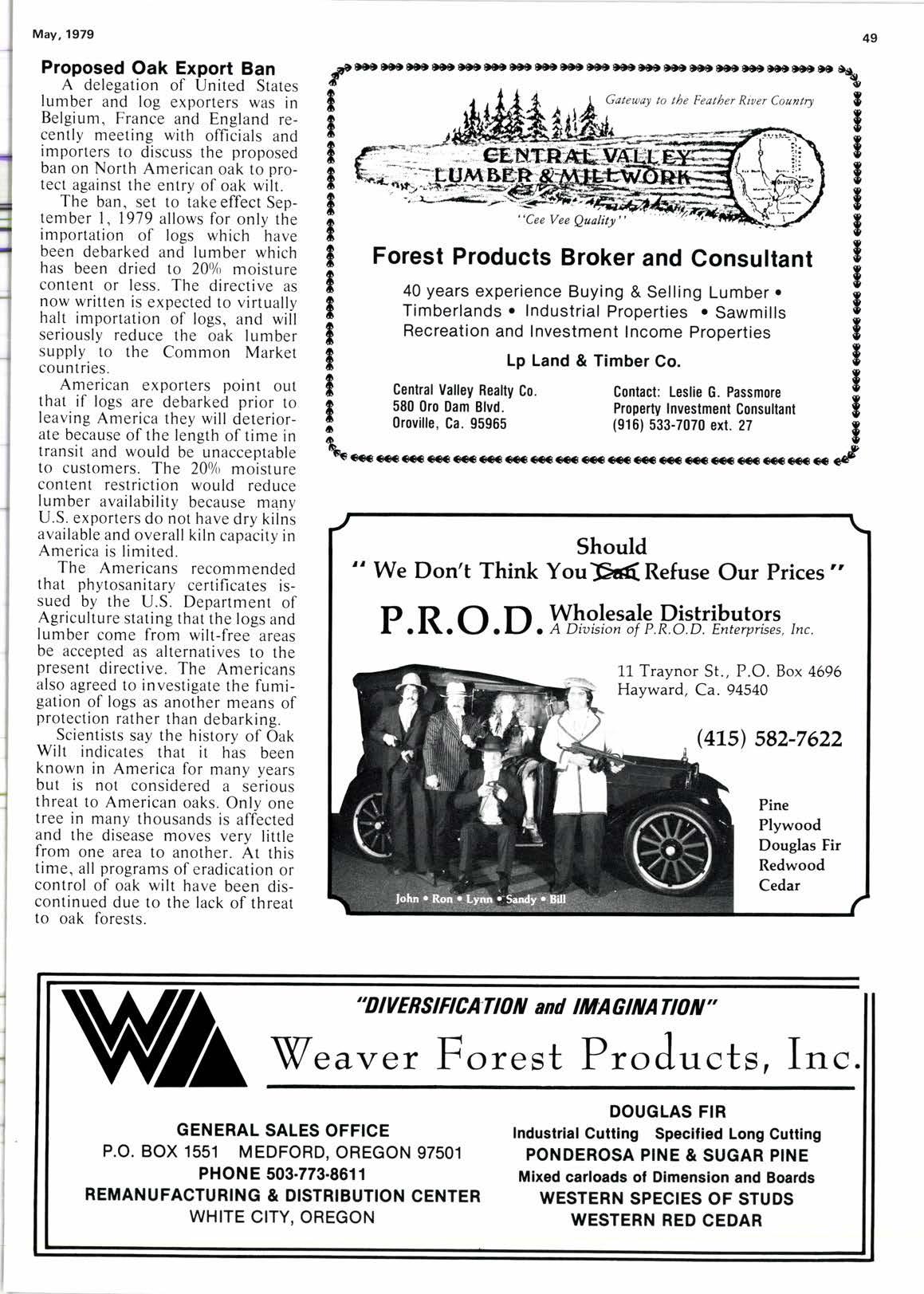
2 minute read
Hardwood Distributors Optimistic
ll, HEN the meeting of the lU Pacific Coast Wholesale Hardwood Distributors Association got to that part of their program where members gave reports on how business is in their areas, it made for good listening. While all agreed that there had been a slight downturn, there was universal agreement that 1979 would still be a good year. Some thought very good.
Holding their 56th annual convention in Palm Springs, Ca., the small but influential group of western hardwood principals and executives, again managed to complete the requiste business at hand in a manner that could reasonably be described as relaxed. Maybe even laid back.
Henry L. Jones, president of the National Hardwood Lumber Association, led off the list of speakers with a comprehensive report on the new $l.l million NHLA headquar- ters and hardwood school in Memphis, Tn. Final transition from Chicago to the new site is expected to be completed by July.
Jim Cooper then described the plans formulated by the Australian government to bring 12 million board feet of Tasmanian oak to the West Coast market.
Just returned from a triD to Tasmania. a large island southeast of Australia, he said that he was convinced that it was a good product, that the Australians intended to enter the market and would ship a consistent grade in a steady sup- ply. Cooper noted that while not a true hardwood, Tasmanian oak, "looks, feels and performs like a true oak."
Other speakers included David Cutler, The Merchant Magazine, who suggested communication opportunities available to distributors to minimize hardwood installation problems; Karen Blair, National Hardwood Magazine, who gave an update on the European oak log export situation and U.S. attempts to prevent loss of this market; and John Milton Kennedy of the Southern California Edison Co.. who described what he called "the threat of unreasonable demands by environmentalists to power generation."
Elected the new president was Don White, Jr.; Gil Reel,lst v.p.; John Fahs, 2nd v.p.; and G. T. Frost, sec.-treas. Directors named include Harry Anthony, Dick Gray, Bill Lightfoot, John Mullen, Werner Richen and Ken Tinckler. Named honorary life members were Bob Sullivan and Dick Quarg. Tentative spot for next year's convention is Oiai. Ca.
Proposed Oak Export Ban
A delegation of United States lumber and log exporters was in Belgium, France and England recently meeting with officials and importers to discuss the proposed ban on North American oak to protect against the entry of oak wilt.
The ban, set to takeeffect September l.1979 allows for onlv the importation of logs which -have been debarked and lumber which has been dried to 2006 moisture content or less. The directive as now written is expected to virtually halt importation of logs, and will seriously reduce the oak lumber supply to the Common Market countries.
American exporters point out that if logs are debarked prior to leaving America they will deteriorate because of the length of time in transit and would be unacceptable to customers. The 200/o moisture content restriction would reduce lumber availability because many U.S. exporters do not have dry kilns available and overall kiln capacity in America is limited.
The Americans recommended that phytosanitary certificates issued by the U.S. Department of Agriculture stating that the logs and lumber come from wilt-free areas be accepted as alternatives to the present directive. The Americans also agreed to investigate the fumigation of logs as another means of protection rather than debarkins.
Scientists say the history of 6ak Wilt indicates that it has been known in America for many years but is not considered a serious threat to American oaks. Only one tree in many thousands is affected and the disease moves verv little from one area to another. At this time, all programs of eradication or control of oak wilt have been discontinued due to the lack of threat to oak forests.
Forest Products Broker and Consultant











